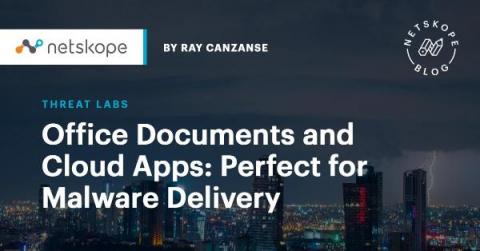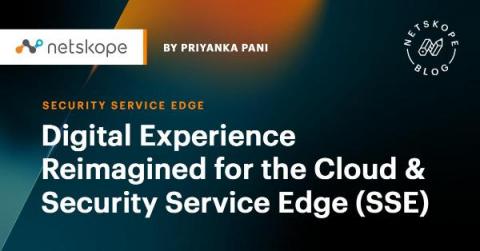Security | Threat Detection | Cyberattacks | DevSecOps | Compliance
Cloud
Speedcast Adds Software Path Certification from AWS to Its Cloud Qualifications, Bringing New Value to Customer Solutions
Office Documents and Cloud Apps: Perfect for Malware Delivery
Microsoft Word, Excel, PowerPoint, and other Office document formats are popular among attackers, who abuse them to infect their victims with ransomware, infostealers, backdoors, and other malware. In this article, we look at the anatomy of a recent Office document attack from the victim’s perspective, highlight the most common types of Office document attacks seen today, and suggest strategies to reduce your risk of becoming the latest victim.
Frequently Asked Questions about Rubrik Cloud Vault
At the Rubrik Data Security Spotlight, we introduced Rubrik Cloud Vault, our fully managed, secure, and isolated cloud vault service built on Microsoft Azure. Rubrik Cloud Vault enables customers to build a comprehensive and multi-layered data protection strategy to be cyber resilient.
EDoS: The Next Big Threat to Your Cloud
Economic Denial of Sustainability (EDoS) is a cybersecurity threat targeting cloud environments. EDoS attacks exploit the elasticity of clouds, particularly auto-scaling capabilities, to inflate the billing of a cloud user until the account reaches bankruptcy or large-scale service withdrawal. EDoS attacks exploit the cloud’s economies of scale to disrupt or discontinue the availability of cloud services and infrastructure that support applications, systems, and corporate networks.
Digital Experience Reimagined for the Cloud & Security Service Edge (SSE)
The transition to the cloud has changed everything! It has upended where apps are hosted, as well as the movement of enterprises’ most valuable digital assets and sensitive data. Access has been redefined and firewall-based perimeters are a thing of the past. Now special considerations are required for users working from everywhere—on both managed and unmanaged devices—as well as address the ever-growing Internet of Things (IoT).
Cloudflare and CrowdStrike Expand Partnership to Bring Integrated Zero Trust Security to Devices, Applications and Networks
CrowdStrike and Cloudflare Expand Zero Trust from Devices and Identities to Applications
Threat actors continue to exploit users, devices and applications, especially as more of them exist outside of the traditional corporate perimeter. With employees consistently working remotely, adversaries are taking advantage of distributed workforces and the poor visibility and control that legacy security tools provide.
What Are the Benefits of Investing in Cloud Storage Security?
As more and more businesses and individuals choose to store their data online, ensuring the safety of information is becoming exceptionally crucial. According to recent statistics from the Hosting Tribunal, over 95% of IT professionals use cloud storage. This number is expected to grow steadily.
Do You Know Where Your Data Is... And Where it is Going?
Considering the forensic-level attention to data residency that was paid in the early days of cloud, it’s interesting how little regard is now given to the matter. Explaining the many pitfalls of certain data residency challenges to fellow CISOs (and key stakeholders) and why real-time visualisations of data flow matter, is often an interesting exercise.











